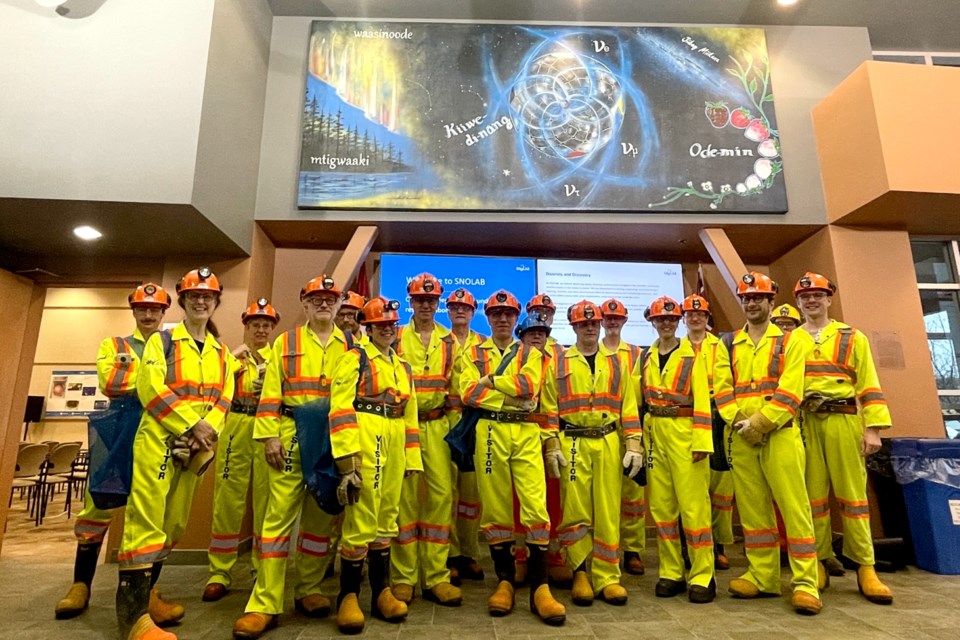Sixty of the world’s leading particle physicists converged on Sudbury’s underground research centre, SNOLAB, recently to discuss a phenomenon that, if witnessed, could revise the Standard Model of Physics.
This was the second international summit on the Future of Neutrinoless Double Beta Decay. It was hosted by SNOLAB on April 27-28 and brought “together stakeholders in the international particle physics community to continue discussions on the strategy and a path to progress in this scientific priority.”
The phenomenon in question — neutrinoless double beta decay — is something Jodi Cooley, the executive director of SNOLAB, called “one of the most compelling and exciting challenges in contemporary physics.”
The decay in question is hypothetical, but if scientists are able to observe this radioactive process it would prove neutrinos are their own antiparticles, a.k.a. Majorana fermion.
“Tonne-scale neutrinoless double beta decay experiments have been a priority of the international particle physics community for several years,” Cooley said in a news release.
“With this two-day summit completed, we have agreed to continue our efforts to pursue this exciting field of study, and SNOLAB is well positioned to play a significant role.”
This commitment could mean a major investment in SNOLAB. The summit welcomed two large international collaborations proposing the tonne-scale experiments Cooley referred to — these are the nEXO and LEGEND-1000 experiments.
Not only do these experiments promise extreme sensitivity to neutrinoless double beta decays, but also they are both looking for a home.
SNOLAB has been identified by both collaborations as their baseline location and, provided the commitment of the international particle physics community continues, SNOLAB will almost certainly host at least one of them, Cooley said.
Either experiment would mean a $400-million investment in SNOLAB.
“SNOLAB’s low background environment is ideal for the study of extremely rare physical interactions. And SNOLAB’s experience hosting and supporting large-scale experiments make us a location of choice for projects such as these,” Cooley said.
Both collaborations would involve hundreds of scientists, technologists, and engineers from dozens of institutions around the world.
A third experiment, CUPID, is already being planned for Laboratori Nazionali del Gran Sasso in Italy.
A decision on how to proceed with these large experiments—and where—is still a year or more away, Cooley said, while commissioning of these experiments would be several years away.
SNOLAB is Canada’s deep underground research laboratory, located in Vale’s Creighton mine. It provides an ideal low background environment for the study of extremely rare physical interactions.
